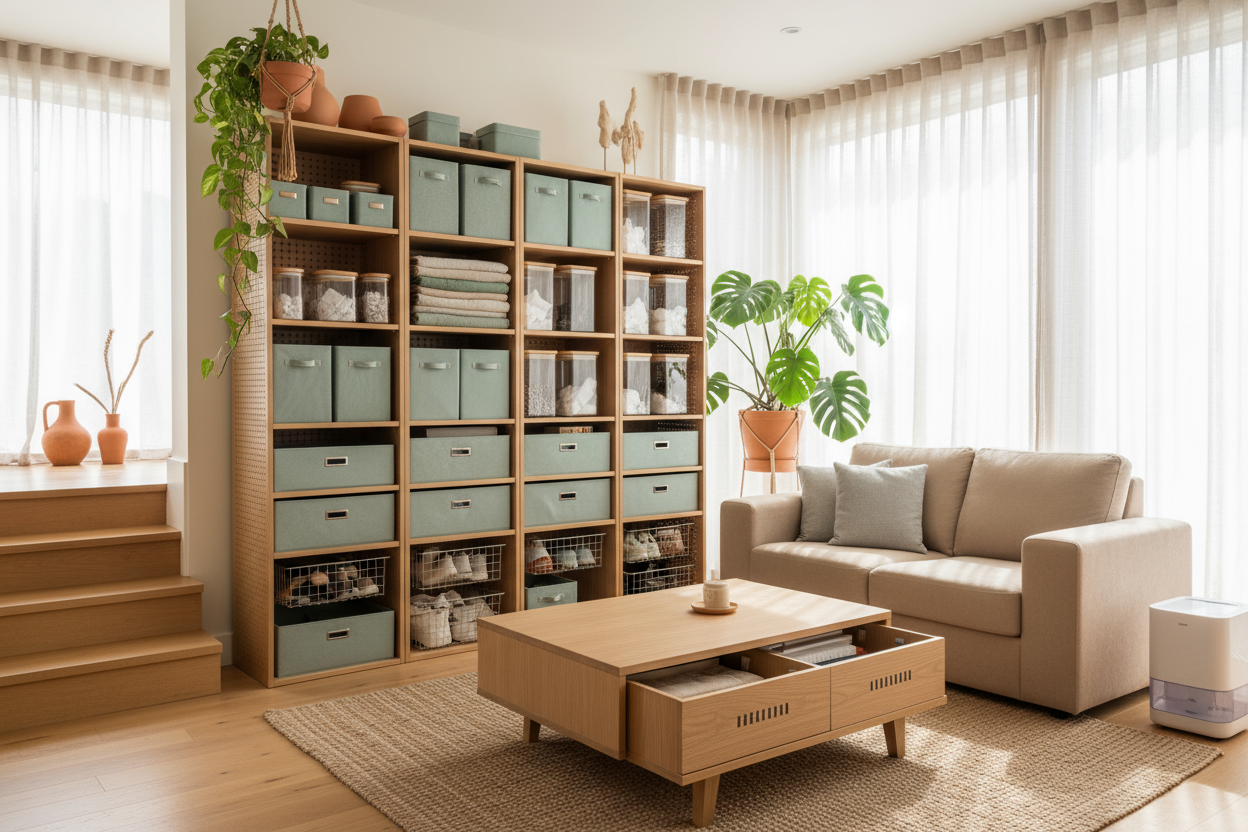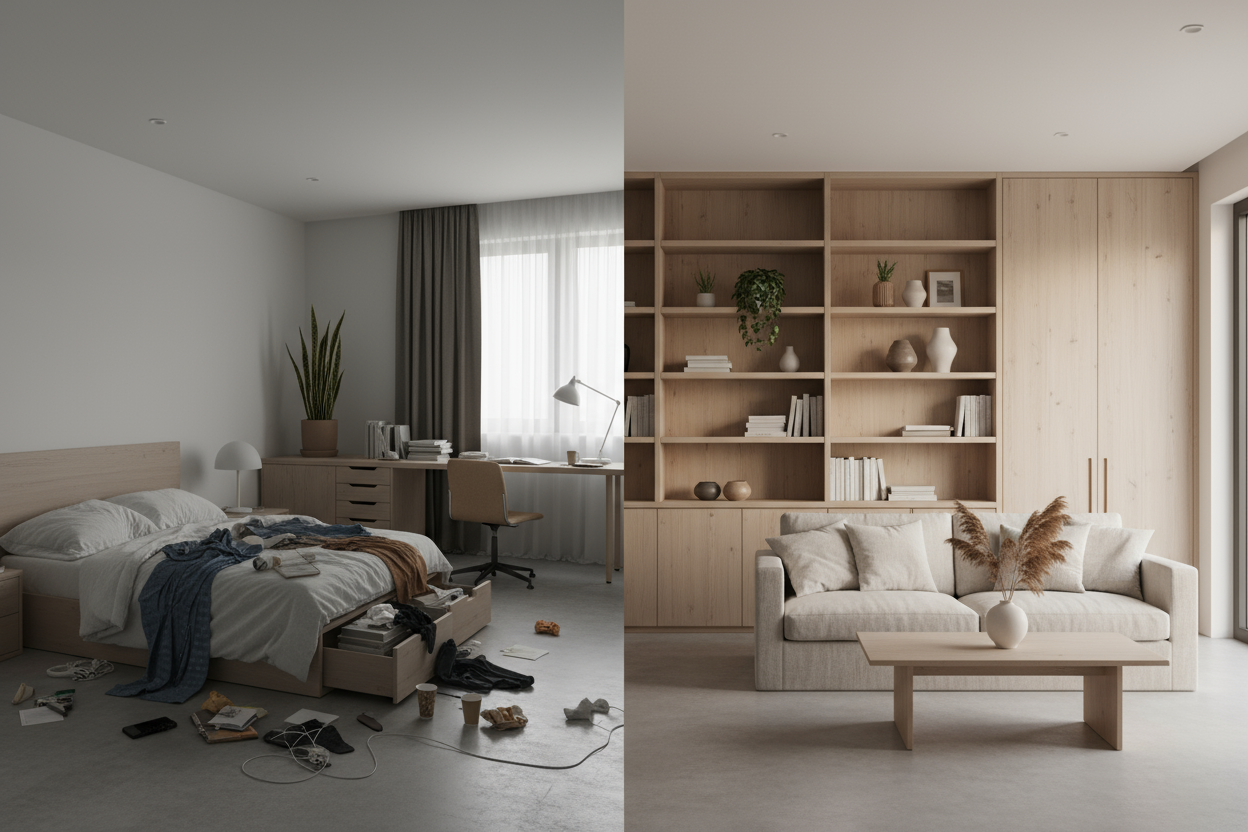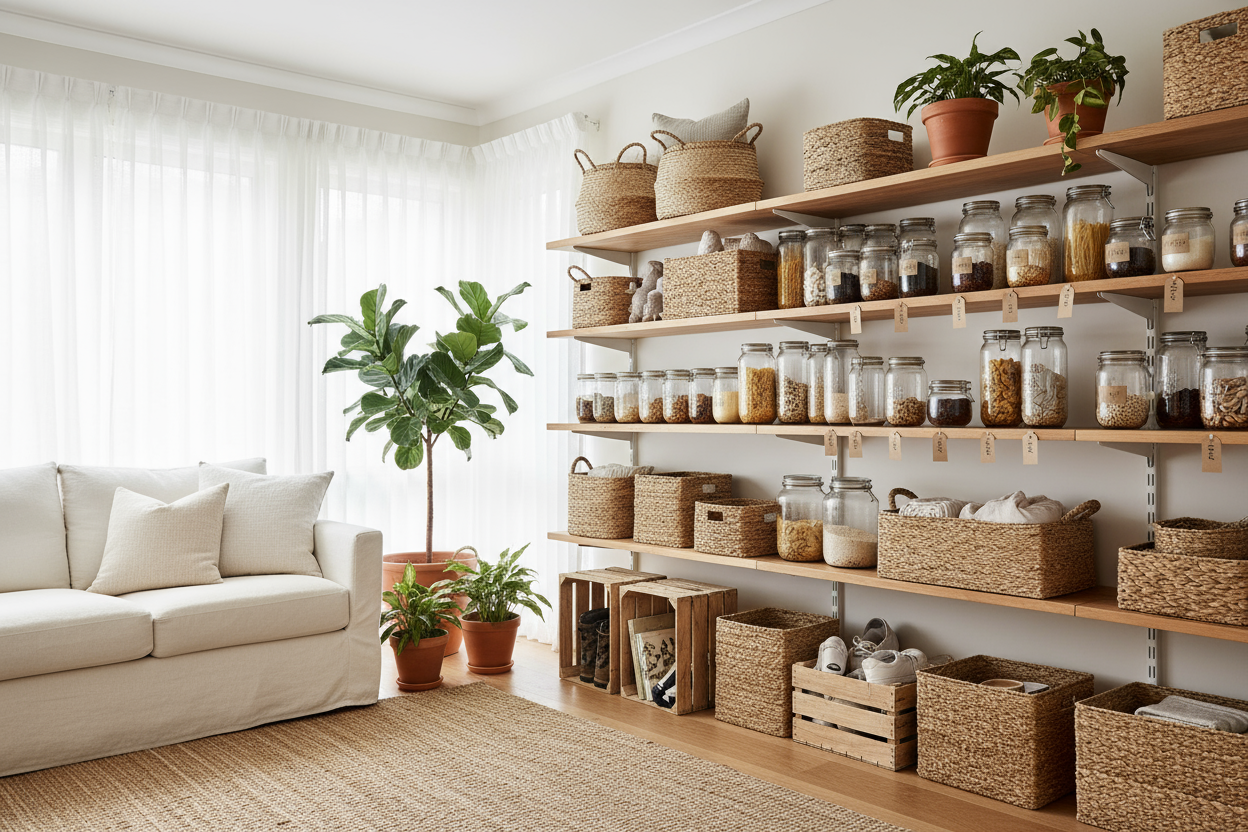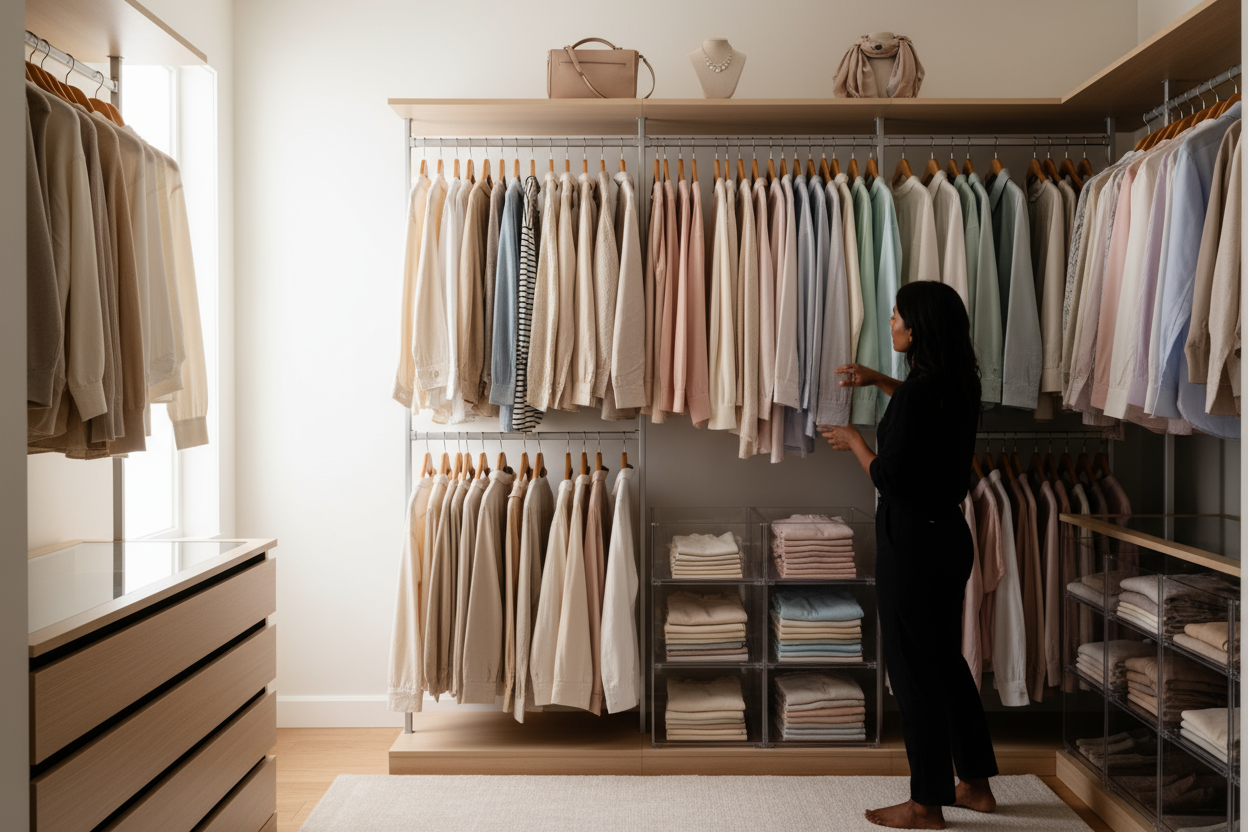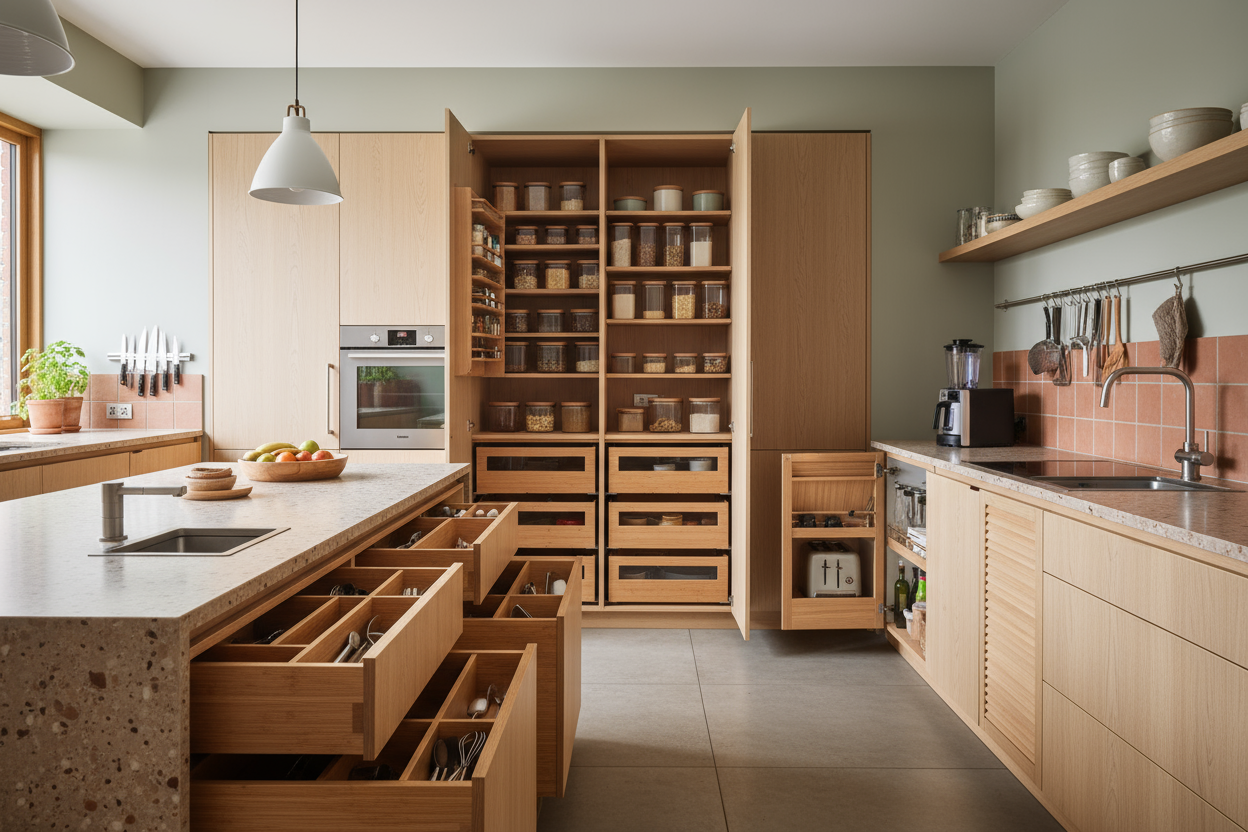With years of experience helping Australians improve home storage in challenging environments, our team has developed solutions tailored for the country's varied climate and building standards.
Australian homes present unique challenges when it comes to staying organised. Unlike houses in other countries, many Australian properties weren't designed with climate comfort or smart storage in mind. From poorly insulated walls that struggle with temperature fluctuations to compact layouts that demand creative storage solutions, organising an Australian home requires strategies that account for our specific building patterns and environmental conditions.
Whether you're dealing with humidity that affects stored items, limited built-in storage, or rooms that feel uncomfortable year-round, understanding these challenges is the first step toward creating a more functional living space. The good news is that with the right approach and storage solutions, you can transform even the most challenging Australian home into an organised, comfortable sanctuary.
Understanding Australian Home Construction Challenges
Many Australian homes suffer from fundamental design issues that directly impact organisation and comfort. Houses are often built with minimal insulation and poor climate consideration, making them uncomfortable year-round and affecting how you can store and organise your belongings. This happens because building regulations historically prioritised cost-cutting over livability, with developers focusing on speed and profit rather than creating homes suited to Australian conditions. This pattern of construction has been noted in various assessments of Australia's building code history (insert peer-reviewed citation).
The lack of market reward for well-built, climate-appropriate homes means buyers can't easily identify quality construction through price alone. This creates a cycle where poorly designed homes continue to be built and sold, leaving homeowners to retrofit solutions after purchase. Understanding this helps explain why your home might feel cramped, uncomfortable, or difficult to organise compared to homes you've seen overseas.
Older Australian homes face additional challenges, with many built before 1980 having virtually no insulation. These properties were constructed when heating standards were minimal and comfort was considered less important than basic shelter. Homes built before this period often lacked formal insulation requirements (insert peer-reviewed citation), which explains much of the thermal discomfort experienced today. The result is homes that can feel colder inside than outside during winter and struggle to maintain comfortable conditions year-round, affecting everything from clothing storage to food preservation.
Climate-Specific Storage Considerations
Australia's diverse climate zones demand different storage approaches depending on your location. Humidity in tropical and subtropical areas can damage stored items if proper ventilation and moisture control aren't maintained. In these regions, closed storage without airflow can lead to mould, mildew, and deterioration of fabrics, papers, and other organic materials.
Temperature fluctuations in poorly insulated homes create additional storage challenges. Items that are sensitive to heat, such as electronics, cosmetics, and certain foods, need protection from extreme temperature variations. This is particularly important in rooms that receive direct sunlight or areas near uninsulated walls and roofs.
Seasonal storage becomes crucial in Australian homes where space is limited but seasonal items are necessary. Summer fans, winter heaters, and seasonal clothing need organised storage solutions that protect them from climate damage while keeping them accessible when needed. The key is choosing storage materials and locations that buffer against temperature and humidity changes.
[collection-carousel="wardrobe-storage"]
Maximising Limited Built-In Storage
Australian homes typically offer less built-in storage compared to international standards, making creative organisation essential. The focus on up-front construction costs means developers often skip built-in wardrobes, pantries, and storage cupboards that would make homes more functional. This leaves homeowners to create their own storage solutions within existing spaces.
Vertical space becomes your best friend in compact Australian homes. Floor-to-ceiling storage solutions make the most of available square footage while keeping items organised and accessible. This approach works particularly well in bedrooms, where wardrobe storage systems can transform limited closet space into highly functional organisation zones.
Multi-functional furniture and storage pieces help address space constraints while maintaining organised living areas. Ottoman storage, bed frames with built-in drawers, and dining tables with storage compartments serve dual purposes in homes where every square metre counts. These solutions are especially valuable in open-plan living areas common in Australian home designs.
Room-by-Room Organisation Strategies
Kitchen Organisation in Small Spaces
Australian kitchens are often compact, requiring strategic organisation to function efficiently. Pantry storage becomes critical when built-in options are limited. Modular pantry systems can transform underutilised spaces into organised food storage areas that protect items from heat and humidity while maximising accessibility.
Vertical storage solutions work particularly well in Australian kitchens, where bench space is often at a premium. Wall-mounted racks, magnetic strips, and overhead storage keep frequently used items accessible without cluttering limited counter areas. Heat-sensitive items need particular attention, especially in kitchens that receive direct sunlight or lack adequate ventilation.
Proper food storage containers become essential in Australian climates, where temperature variations can affect food preservation. Airtight containers protect against humidity and temperature fluctuations while keeping pantry items organised and visible.
Laundry Room Efficiency
Australian laundry rooms are typically small but need to handle significant climate-related challenges. High humidity areas require excellent ventilation and moisture-resistant storage solutions. Organised laundry systems help maximise limited space while ensuring proper airflow around stored items.
Drying clothes becomes a year-round challenge in many Australian climates, requiring organised solutions that work regardless of outdoor weather conditions. Indoor drying racks and organised hanging systems become essential when outdoor drying isn't possible due to humidity, rain, or extreme heat.
[collection-carousel="laundry-storage-solutions"]
Bedroom Storage Solutions
Australian bedrooms often lack adequate built-in storage, making portable and modular solutions essential. Under-bed storage containers protect seasonal items from dust and temperature variations while utilising otherwise wasted space. Climate considerations become important when storing fabrics and clothing that can be damaged by humidity or temperature extremes.
Shoe storage requires particular attention in Australian homes, where outdoor footwear needs protection from dust and weather while indoor shoes need ventilation to prevent odour and moisture buildup. Wall-mounted shoe storage keeps footwear organised while maximising floor space in compact bedrooms.
Dealing with Temperature and Humidity
Australian homes that feel uncomfortable year-round require organisation strategies that account for climate impact on stored items. Poor insulation means interior temperatures can fluctuate dramatically, affecting everything from clothing storage to electronics placement. Understanding these patterns helps you choose appropriate storage locations and materials.
Humidity control becomes critical in many Australian regions, where moisture can damage stored items and create unhealthy conditions. Proper ventilation in storage areas, moisture-absorbing products, and breathable storage containers help protect belongings while maintaining organisation systems.
Electronics and heat-sensitive items need special consideration in Australian homes where indoor temperatures can become extreme. Avoiding storage near uninsulated walls, windows, or areas that receive direct sunlight helps protect valuable items while maintaining organised systems.
Creating Comfort Through Organisation
Well-planned organisation can actually improve comfort in climate-challenged Australian homes. Strategic placement of storage solutions can create better airflow, reduce clutter that traps heat, and improve the functionality of heating and cooling systems. This is particularly important in homes where comfort issues make certain areas less usable during extreme weather.
Seasonal rotation systems become essential in Australian homes where climate variations require different clothing, bedding, and equipment throughout the year. Organised seasonal storage protects items during off-seasons while keeping current necessities easily accessible. This approach is especially valuable in homes with limited storage space.
Passive design principles can be supported through thoughtful organisation. Keeping window areas clear for natural light and ventilation, organising heat-generating appliances away from living areas, and creating storage solutions that don't block airflow all contribute to improved home comfort alongside better organisation.
[collection-carousel="home-storage"]
Maintenance and Adaptation
Australian climate conditions require ongoing attention to organisation systems. Regular checks for moisture damage, temperature-related deterioration, and seasonal adjustments help maintain organised spaces throughout the year. This is particularly important in regions with high humidity or extreme temperature variations.
Flexibility becomes key in Australian home organisation, where seasonal changes can be dramatic and space constraints require adaptive solutions. Organisation systems that can be easily reconfigured for different seasons or changing needs work better than rigid setups in Australian conditions.
Professional assessment may be valuable for homes with significant climate or structural challenges. Professional organisers familiar with Australian home conditions can provide tailored solutions that account for specific climate challenges and space constraints that generic organisation advice might overlook.
How We Can Help
Creating an organised Australian home that works with your climate and space constraints doesn't have to be overwhelming. Our curated range of storage and organisation solutions is specifically selected to work well in Australian conditions, from humid coastal areas to temperature-extreme inland regions.
Whether you're dealing with a compact kitchen that needs smart pantry solutions, a small laundry room that handles year-round drying challenges, or bedrooms lacking adequate built-in storage, we offer practical solutions that maximise your space while protecting your belongings from Australian climate challenges.
Our modular storage systems adapt to your specific needs and space constraints, allowing you to create organised solutions that grow and change with your requirements. From wardrobe organisation that handles seasonal clothing storage to kitchen systems that keep food fresh in variable temperatures, our products are chosen with Australian homes in mind.
[collection-carousel="storage-cabinets-shelf-units"]
Moving Forward
Organising an Australian home successfully means understanding and working with the unique challenges our climate and construction patterns create. Rather than fighting against poor insulation, limited storage, and temperature fluctuations, the best approach is to choose organisation solutions that accommodate these realities while improving your daily comfort and functionality.
Start with the areas that cause you the most daily frustration, whether that's a cramped kitchen, overflowing wardrobe, or cluttered laundry space. Small improvements in organisation can have significant impacts on how your home feels and functions, especially when those improvements account for Australian climate considerations.
Remember that creating an organised home is an ongoing process, particularly in Australian conditions where seasonal changes and climate challenges require adaptive solutions. Focus on building flexible systems that can evolve with your needs while protecting your belongings from the environmental challenges that make Australian homes unique.


